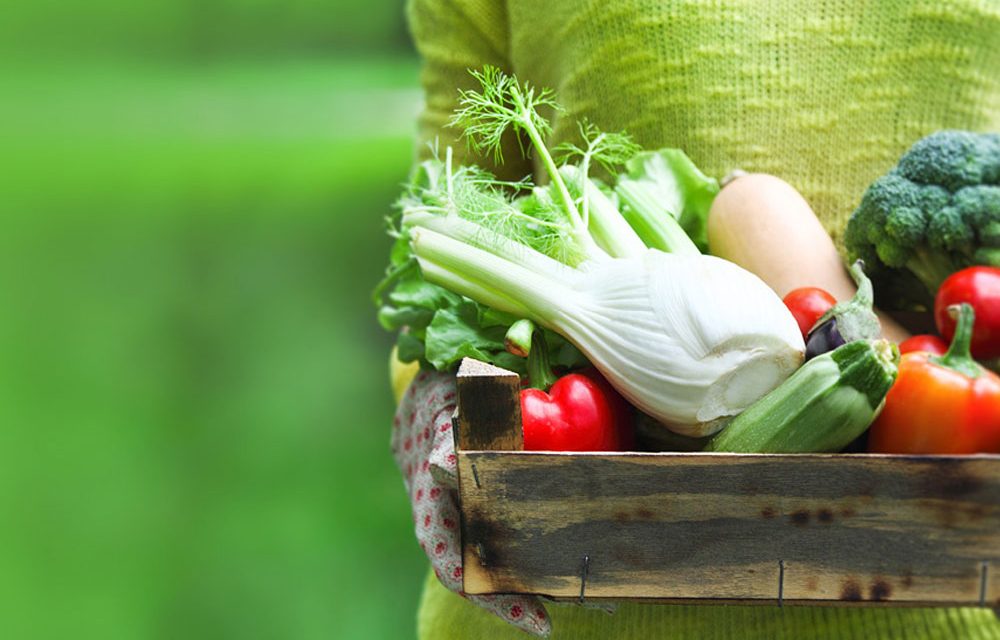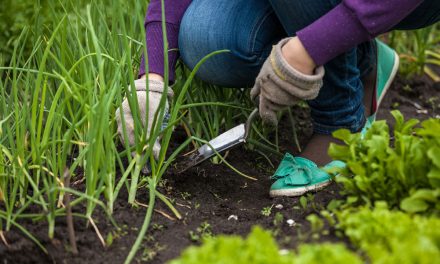Follow our seasonal organic guide to growing veggies and you’ll have a full pantry all year long.
January
To do: Water deeply early in the morning to discourage pests and diseases that thrive on warm, damp overnight conditions. Spray tomatoes weekly against diseases with Margaret Roberts’ Organic Fungicide.
Plant: Beans (runner and bush), beetroot, cabbage, carrots, lettuce, radishes, rocket, spinach, Swiss chard, turnips.
Region: In cooler areas, sow broccoli and cauliflower now; in warm, frost-free areas, plant peppers, eggplant, pumpkin and sweet potatoes.
February
To do: Start a compost heap with all the garden trimmings. Leave some plants to go to seed and save them in clearly marked envelopes in a cool, dry place to plant next season.
Plant: Artichokes (globe and Jerusalem), beans (bush), beetroot, cabbage, carrots, cauliflower, lettuce, onions, radishes, rocket, spinach, Swiss chard, turnips.
Region: In warm, frost-free areas, you can plant runner beans and tomatoes.
March
To do: Prepare vegetable beds for autumn planting as per spring, and never plant the same or a related crop in the same spot season after season.
Plant: Sow all your winter soup veggies this month: beetroot, cabbage, cauliflower, carrots, celery, endives, leeks, onions, parsnips, Swiss chard, spinach and turnips.
Region: In sub-tropical, frost-free areas, you can plant a wider range than elsewhere – including cucumber, eggplant, marrows, peppers and tomatoes – as well as leafy herbs such as chicory, chives, dill, mint, parsley, rocket, sorrel and watercress.
April
To do: Outsmart cutworms with a loo roll collar pushed down into the soil around new seedlings. Glue a strip of sandpaper around the top of the roll to frustrate snails.
Plant: Broad beans, beetroot, cabbage, carrots, leeks, lettuce, peas, radishes, Swiss chard, turnips.
Region: In sub-tropical, frost- free areas, you can continue planting a wide range of veggies.
May
To do: Pot cuttings of herbs such as rosemary and perennial basil, and keep them in a warm, protected spot during the winter. Plant fruit trees so they can settle in and be ready for spring.
Plant: Broad beans, beetroot, cabbage, carrots, leeks, lettuce, peas, radishes, Swiss chard, turnips.
Region: In frost-prone areas, you should stick to broad beans and peas, while in sub-tropical areas you can continue planting a wide range of veggies; and root crops continue doing well in the winter rainfall.
June
To do: Plan new beds, service your tools and check your irrigation system, replacing all nozzles that no longer work. In cold areas, protect your plants against frost.
Plant: Cabbage, peas, turnips.
Region: In winter rainfall and warm frost-free areas, you can continue planting winter veggies, but planting comes to a halt in the colder areas.
July
To do: Prune fruit and nut trees and vines, seal cuts and spray with vinegar anti-gogga solution (add 250ml ordinary household vinegar to five litres water and a squirt of Sunlight soap). Pull up the stumps of cabbages and cauliflowers so they don’t harbour pests, and chop them up and put them on the compost heap if disease-free.
Plant: Artichokes, asparagus, rhubarb crowns, parsnips, peas, radishes, Swiss chard, turnips.
Region: Start planting tomatoes and melons in warm, frost-free areas, as well as peppers, eggplant and marrows.
August
To do: Prepare vegetable beds for spring planting. Sprinkle with volcanic rock dust and dig in compost; use only well-rotted manure that’s been through the compost heap. Confuse the goggas by planting marigolds, borage, chives, garlic and zinnias among veggies.
Plant: As spring approaches, you can start planting asparagus, beans (bush and runner), beetroot, carrots, cos lettuce, cress, marrows, parsley, parsnips, radishes, rocket, spinach, Swiss chard, tomatoes, turnips. Add your favourite culinary herbs such as marjoram and coriander.
Region: In frost-free areas, also plant cucumber, eggplant, melons, peppers and squash.
September
To do: Spray weekly against goggas with a weak vinegar solution (see July). It also acts as a foliar feed. If you want to kill weeds, use a 10% vinegar spray.
Plant: Spring is bumper planting time, when all except the winter veggies (broad beans, cabbage family and peas) will thrive. Go wild with herbs – everything from chives and origanum to thyme.
Region: In winter rainfall areas, plant Cape gooseberry seeds.
October
To do: Spread crushed eggshells around tender veggies to discourage snails, as they don’t like crawling on sharp edges. Take cuttings to propagate perennial herbs such as mint, rosemary and sage.
Plant: Continue with regular plantings of summer veggies (as mentioned in August) so that you have a continuous supply.
Region: Vegetables are prone to diseases in summer in hot and humid areas, so stick to sweet potatoes and radishes at this time of the year.
November
To do: Make a focal point with wigwams of poles for runner beans and courgettes to climb. Feed citrus trees with one tablespoon of Epsom salts dissolved in water.
Plant: Vary your summer vegetables with wonderful purple tomatoes and GMO-free maize.
Region: Veggie gardeners in the hot, humid Lowveld are still taking it easy.
December
To do: Mulch with coarse compost to protect plants’ roots from the summer heat. This will also cut your water bills. As the mulch breaks down, it enriches the soil and feeds plants.
Plant: Keep planting summer veggies regularly and try some of the more unusual varieties, such as artichokes, celeriac, kohlrabi and okra.
Region: In hot and humid areas, you can add peppers to your plantings. In the Western Cape, protect seedlings from the hot, drying south-easter wind prevalent in summer.











